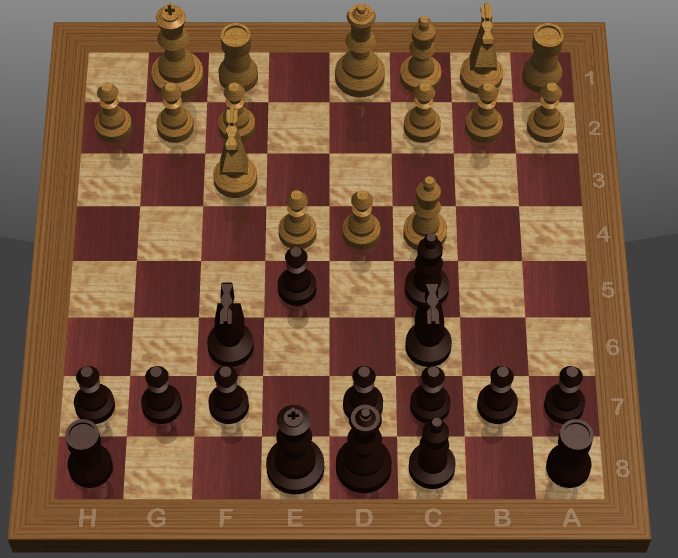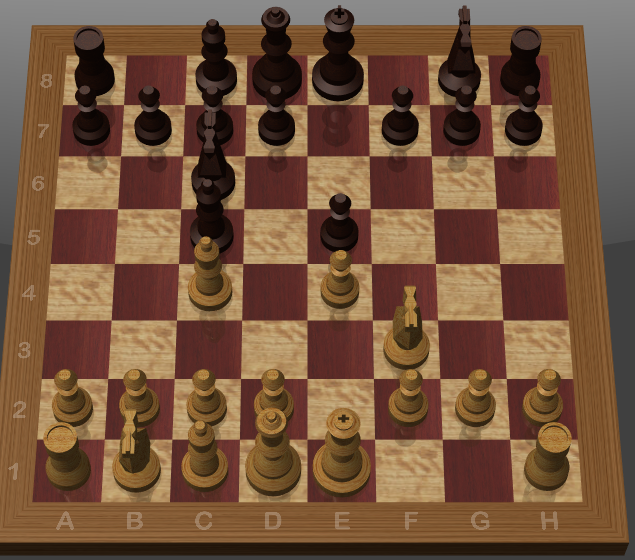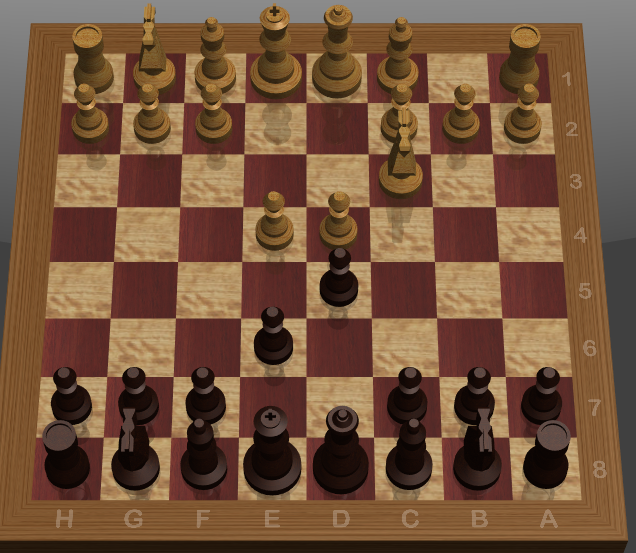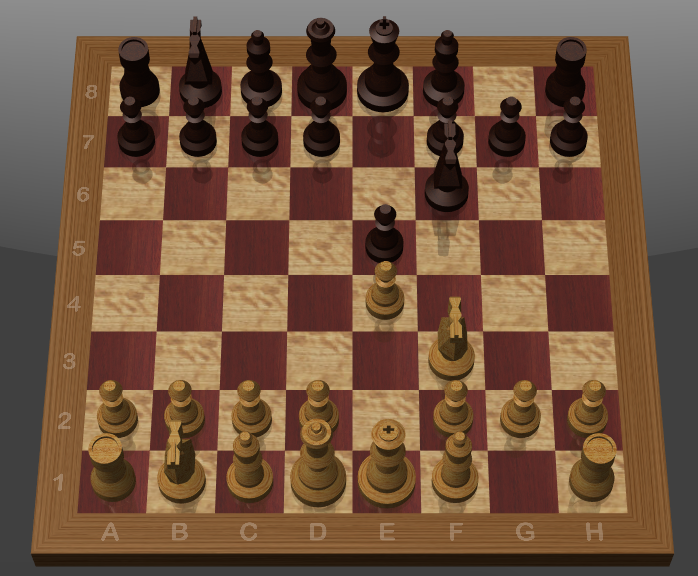The “Max Lange” opening is a gambit by white. In this opening both sides are still attempting to develop by the book, but white is going to throw in a gambit early in development.
- e4 e5
- Nf3 Nc6
- Bc4 Bc5
- 0-0 Nf6
So far the game has developed pretty predictably. Both sides advance their king pawns, white develops Nf3 and attacks e5. Black counters with Nc6 to both develop that knight and protect e5. Both sides develop their king bishops to make room to castle. White castles and then black moves the king knight to make room for black to castle. Then, with move 5, white plays a gambit (see below).
5. d4
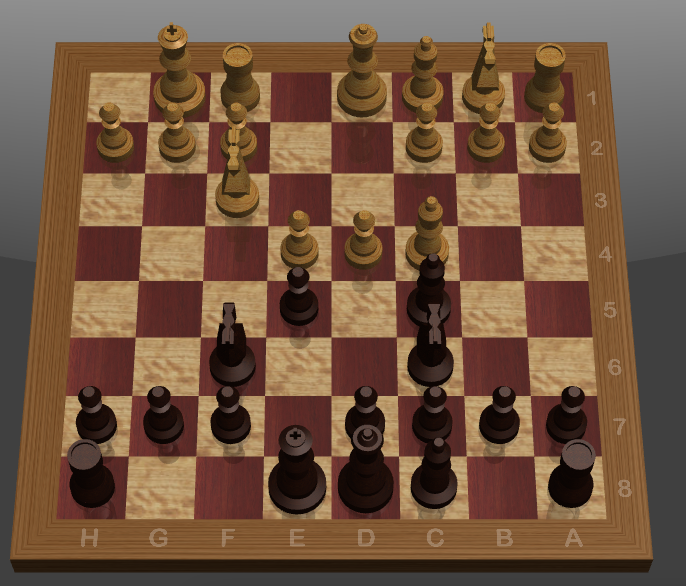
5… exd4
6. e5 d4 (see board below)
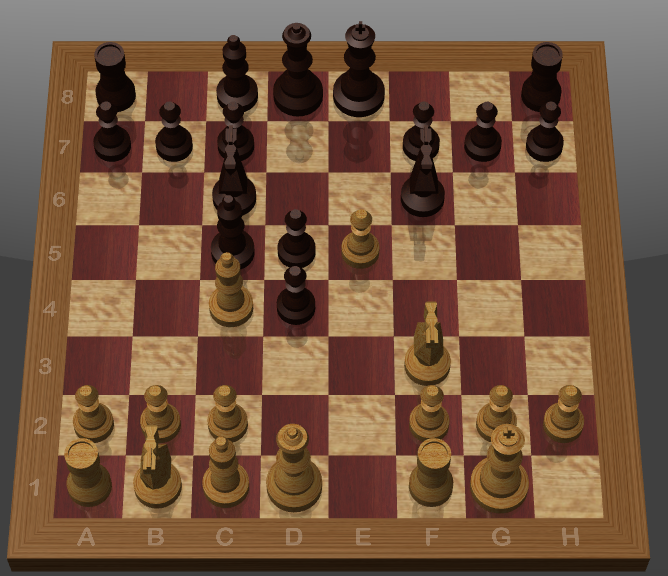
If black doesn’t take d4, then white goes d5, threatens the bishop, and has a strong position in the center. So black takes d4, white advances to e5 and threatens the knight. Black responds by d5, which threatens the white bishop.
7. e5xN d5xB
8. Re1+ Be6 (see below)
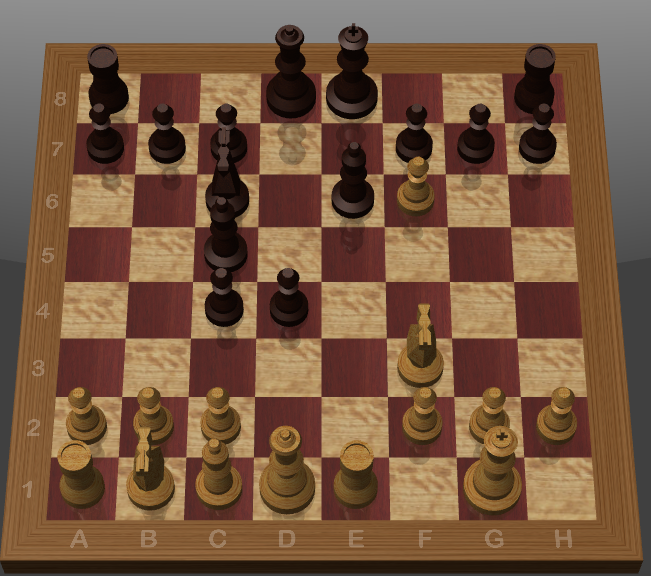
After move 8, black controls the center and is ahead in development. However, white has castled and the presence of the pawn at f6 may present some challenges and means that black should probably castle queen side.
Authors don’t really give white or black an advantage here, from here the game has to be played out and its all about who can get the most resources into play first. Black tries to attack the white kind, white focuses on that bishop at c5.

